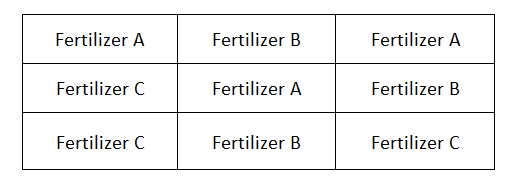The concept of blocking in statistics refers to the division of given data into homogeneous groups of the same size in order to reduce the error in the model.
Historical Origin:
The concept of blocking originally arose from the fact that fields were divided into many parts (blocks) when conducting a statistical study of the effect of fertilizers on the growth rate of crops.
This is because the quality of the soil itself might affect the growth rate of crops. Hence, the field was divided into many parts, and fertilizers were assigned randomly to each of the blocks.
Examples of blocking in statistics:
- Suppose you are interested in studying the effect of different teaching methods on the performance of students. Here it is clear that we must divide the students into group (blocks) on the basis of their IQ. Only if we conduct the study on a bunch of students of similar intelligence will the conclusions of our study be reliable.
- As explained earlier, if we want to study the effect of fertilizers on the growth rate of crops we must divide our field into blocks and assign treatments randomly. For example we might divide our field into nine blocks and assign three kinds of fertilizers A, B and C to each block.

Types of blocking in statistics:
We have different kinds of blocking designs depending on whether or not we use one or two blocking factors:
1. Randomized Block Design (RBD) – In randomized block design we divide our data which receives different treatments into blocks on the basis of one factor only such as:
a) Dividing a group of people on the basis of gender.
b) Dividing a group of students on the basis of IQ.
c) Dividing a field on the basis of soil quality.
The randomized block design is used in the two-way ANOVA procedure.
2. Latin Square Design (LSD) – In a Latin square design we divide our data which receives different treatments into blocks on the basis of two factors such as:
a) Dividing a group of people on the basis of height and weight.
b) Dividing a group of students on the basis of IQ and EQ.